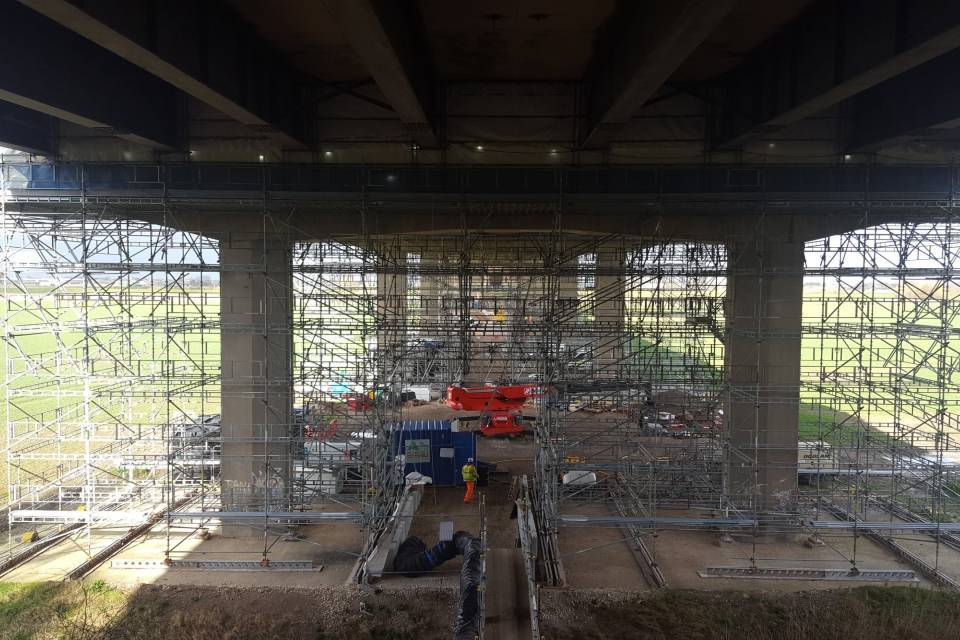
Abseiling, crawling and diving – all in a day’s work for highways engineers and inspectors!
Published By GOV.UK [English], Fri, Nov 20, 2020 9:47 AM
A two-year routine maintenance programme on a bridge used by around 23,000 drivers a day has recently completed – with hardly any impact on road users.
A team of highly skilled engineers began work on site on the Ouse Bridge on the M62 in Yorkshire in May 2018 and over the past two years they have replaced over 200 bridge bearings largely out of sight of drivers. The bearings support the bridge and allow it to move in a controlled way during changes in temperature and weather.
Now they have just finished replacing the bridge parapets, leaving a bridge fit for many more years to come.
The Ouse Bridge was opened in 1976, the last section of the main part of the M62 which stretches east to west from Liverpool to Hull. The maintenance is just one example of the type of work which Highways England teams do every day to ensure its 22,000 structures – including bridges and tunnels – that are used daily by millions of people remain safe.
Abseiling, crawling and diving are all ways bridge engineers and inspectors get up close and personal with the country’s structures to keep them safe.
Highways England’s Chief Highways Engineer Mike Wilson said:
Our roads connect the country and everyday millions of people rely on our structures to get safely to their destination. We carry out thousands of inspections every year looking at all aspects of structures, from the condition of the paint through to the integrity of the materials. Considering all these assessments together helps us assess the overall maintenance needs, programme maintenance to reduce disruption and reduce the likelihood of emergency repairs.
Highways England has a rigorous inspection regime for all its structures, which identifies maintenance needs and required repairs. General inspections are undertaken every two years with more detailed principal inspections typically every six years involving close examination of all parts of a structure.
Most of the inspections and repairs take place overnight or underneath the structures, meaning that often drivers are unaware of the work. This can include abseiling down a bridge, examining tunnels and diving to inspect underwater parts of our structures.
Bridge engineers use a variety of techniques to ensure that the structures, tunnels and associated equipment are all in working order. Abseiling allows engineers to examine parts of a structure that are difficult to access, such as tall piers in river estuaries. Engineers can also examine bridges and tunnels by getting underneath the road surface to check the drainage systems are still functioning correctly. And where structures – like the Orwell Bridge are partially submerged, diving is required to complete the tasks.
Taking into account all of the available inspection and testing data, Highways England is able to plan its maintenance programme to ensure all its structures remain safe. As key elements of a structure come to the end of their serviceable life, maintenance can be carefully planned to minimise disruption for drivers.
Over the next five years, Highways England is planning on spending over £4.1 billion on the biggest renewals programme it has ever embarked on. The plans include the renewal of 170 bridges and other structures.
General enquiries
Members of the public should contact the Highways England customer contact centre on 0300 123 5000.
Media enquiries
Journalists should contact the Highways England press office on 0844 693 1448 and use the menu to speak to the most appropriate press officer.
Press release distributed by Media Pigeon on behalf of GOV.UK, on Nov 20, 2020. For more information subscribe and follow